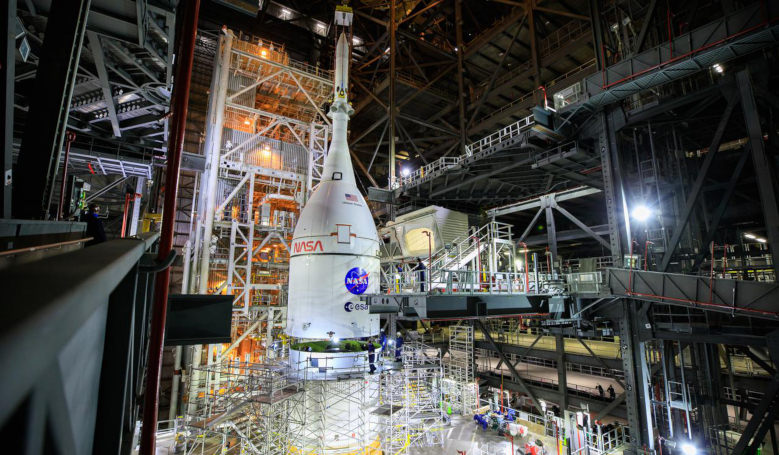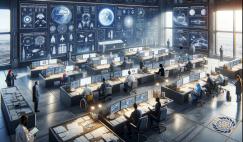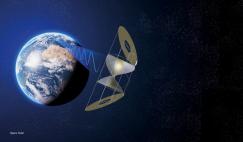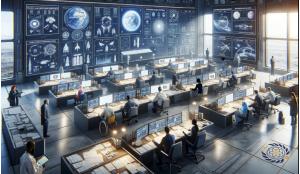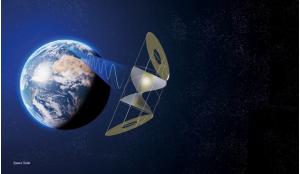NASA announced on Friday that the agency’s long-delayed maiden flight of its massive Space Launch System (SLS) rocket will take place during a 15-day window beginning 12 February, 2022; the date however will also rely on the outcome of a critical fuelling test on the launch pad in January.
Officials announced the schedule after engineers earlier in the week completed stacking the huge 98 metre-tall (322-foot) SLS/Orion system at NASA’s Kennedy Space Center in Florida.
“Completing stacking is a really important milestone,” said Mike Sarafin, NASA’s Artemis 1 mission manager. “It shows that we’re in the home stretch toward the mission.”
With stacking complete, NASA's Exploration Ground Systems teams can now conduct a series of integrated tests of Orion and SLS’s communications and data links before the rocket and spacecraft are rolled out to launch pad 39B by the end of the year.
A final test, known as the wet dress rehearsal, is scheduled for early January 2022.
The wet dress rehearsal demonstrates the ability to load cryogenic, or supercold propellants, as well as detanking the propellants with the Artemis I rocket at the launch pad on the mobile launcher.
It also serves as a final checkout for the rocket and the ground systems, after which the rocket will roll back to the Vehicle Assembly Building for final inspections and checkouts, including the second part of the flight termination system test.
All being well, Orion/SLS will then return to the launch pad six days before the target launch date.
"The February launch period opens on the 12th and our last opportunity in February is on the 27th," Sarafin said. The next windows are in March and April. “We’re on for roughly two weeks, and then we’re off for about two weeks,” he added.
NASA has a 21-minute launch window available on the 12th, opening at 22: 56 GMT (17:56 EST), but longer daily launch windows as long as two hours are also available through 27 February, Sarafin said.
The mission duration is expected to be four to six weeks but will depend on when Orion/SLS launches.
The first half of the 15-day launch period in February would enable what NASA calls “long class” mission profiles running about six weeks in duration, Sarafin said. Later in the month, there are shorter mission timelines available, each lasting around 26 days.
During the mission, Orion will be sent on a close flyby approximately 100 kilometres (62 miles) above the lunar surface. The spacecraft will then use the flyby to assist in inserting itself into a Distant Retrograde Orbit (DRO) trajectory around the Moon where it will stay for at least six days for a “short class” mission.
A successful flight would be a major milestone for NASA and the SLS and Orion programmes, which have suffered substantial cost overruns and years of delays.
It would also pave the way forward for the Artemis II mission, the first crewed test of SLS and of Orion. During this flight, it is anticipated that the four crew members will fly Orion to 8889 kilometres beyond the Moon before completing a lunar flyby and returning to Earth. But there is still a long way to go before then.
“Our team has demonstrated tremendous dedication preparing for the launch of Artemis I,” said Mike Bolger, Exploration Ground Systems program manager. “While there is still work to be done to get to launch, with continued integrated tests and Wet Dress Rehearsal, seeing the fully stacked SLS is certainly a reward for all of us.”





